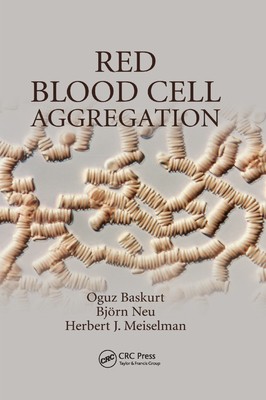
- We will send in 10–14 business days.
- Author: Oguz Baskurt
- Publisher: CRC Press
- ISBN-10: 0367382318
- ISBN-13: 9780367382315
- Format: 15.5 x 23.1 x 2 cm, softcover
- Language: English
- SAVE -10% with code: EXTRA
Reviews
Description
Red blood cells in humans--and most other mammals--have a tendency to form aggregates with a characteristic face-to-face morphology, similar to a stack of coins. Known as rouleaux, these aggregates are a normally occurring phenomenon and have a major impact on blood rheology. What is the underlying mechanism that produces this pattern? Does this really happen in blood circulation? And do these rouleaux formations have a useful function?
The first book to offer a comprehensive review of the subject, Red Blood Cell Aggregation tackles these and other questions related to red blood cell (RBC) aggregates. The book covers basic, clinical, and physiological aspects of this important biophysical phenomenon and integrates these areas with concepts in bioengineering. It brings together state-of-the-art research on the determinants, mechanisms, and measurement and effects of RBC aggregation as well as on variations and comparative aspects.
After an introductory overview, the book outlines factors and conditions that affect RBC aggregation. It presents the two hypotheses--the bridging model and the depletion model--that provide potential mechanisms for the adhesive forces that lead to the regular packing of the cells in rouleaux formations. The book also reviews the methods used to quantify RBC aggregation in vitro, focusing on their importance in clinical practice. Chapters discuss the effect of RBC aggregation on the in vitro rheology of blood as well as on tube flow.
The book also looks at what happens in the circulation when red blood cells aggregate and examines variations due to physiological and pathophysiological challenges. The concluding chapter explores the formation of red blood cell aggregates in other mammals. Written by leading researchers in the field, this is an invaluable resource for basic science, medical, and clinical researchers; graduate stu
EXTRA 10 % discount with code: EXTRA
The promotion ends in 16d.12:56:32
The discount code is valid when purchasing from 10 €. Discounts do not stack.
- Author: Oguz Baskurt
- Publisher: CRC Press
- ISBN-10: 0367382318
- ISBN-13: 9780367382315
- Format: 15.5 x 23.1 x 2 cm, softcover
- Language: English English
Red blood cells in humans--and most other mammals--have a tendency to form aggregates with a characteristic face-to-face morphology, similar to a stack of coins. Known as rouleaux, these aggregates are a normally occurring phenomenon and have a major impact on blood rheology. What is the underlying mechanism that produces this pattern? Does this really happen in blood circulation? And do these rouleaux formations have a useful function?
The first book to offer a comprehensive review of the subject, Red Blood Cell Aggregation tackles these and other questions related to red blood cell (RBC) aggregates. The book covers basic, clinical, and physiological aspects of this important biophysical phenomenon and integrates these areas with concepts in bioengineering. It brings together state-of-the-art research on the determinants, mechanisms, and measurement and effects of RBC aggregation as well as on variations and comparative aspects.
After an introductory overview, the book outlines factors and conditions that affect RBC aggregation. It presents the two hypotheses--the bridging model and the depletion model--that provide potential mechanisms for the adhesive forces that lead to the regular packing of the cells in rouleaux formations. The book also reviews the methods used to quantify RBC aggregation in vitro, focusing on their importance in clinical practice. Chapters discuss the effect of RBC aggregation on the in vitro rheology of blood as well as on tube flow.
The book also looks at what happens in the circulation when red blood cells aggregate and examines variations due to physiological and pathophysiological challenges. The concluding chapter explores the formation of red blood cell aggregates in other mammals. Written by leading researchers in the field, this is an invaluable resource for basic science, medical, and clinical researchers; graduate stu


Reviews